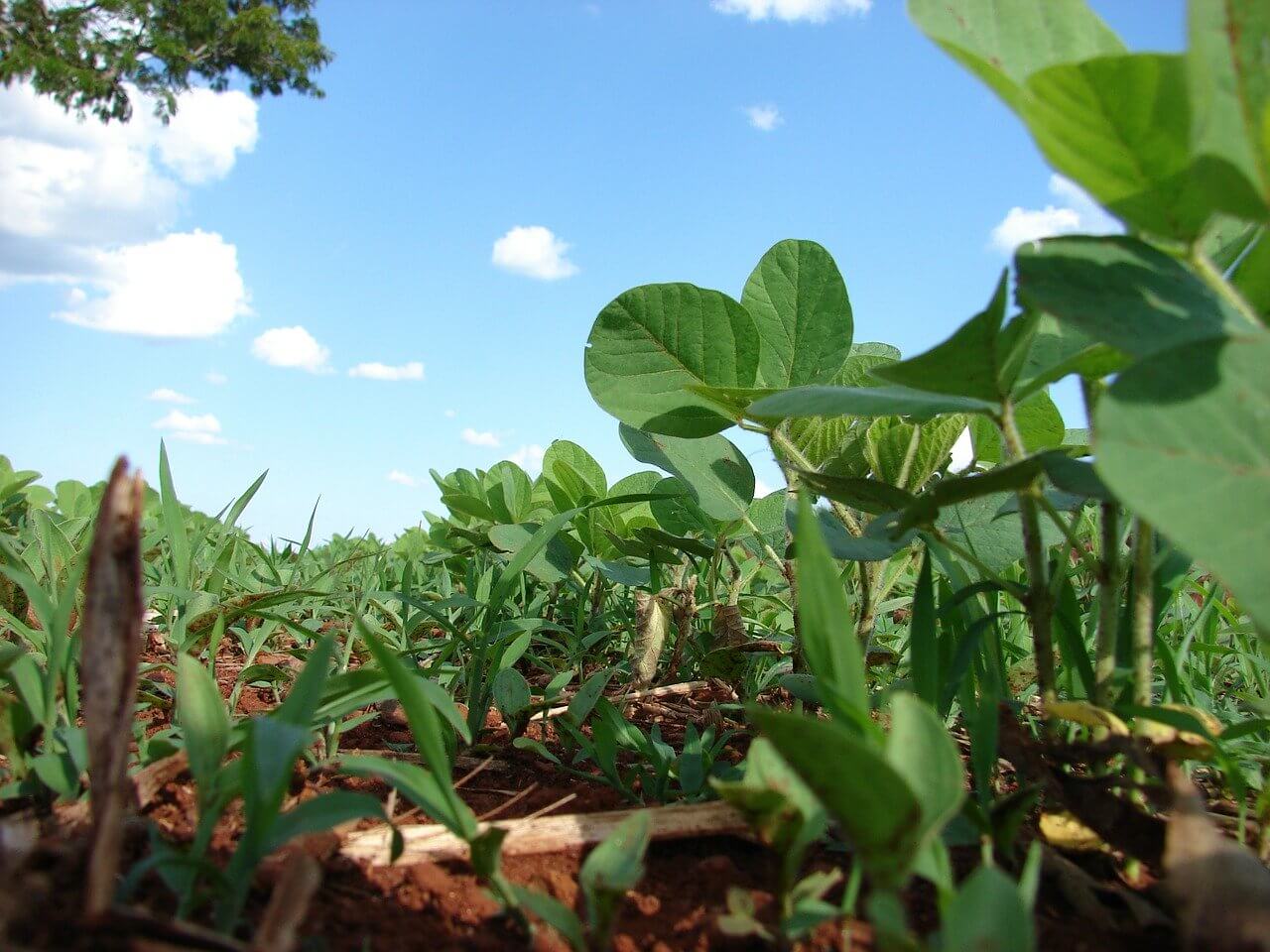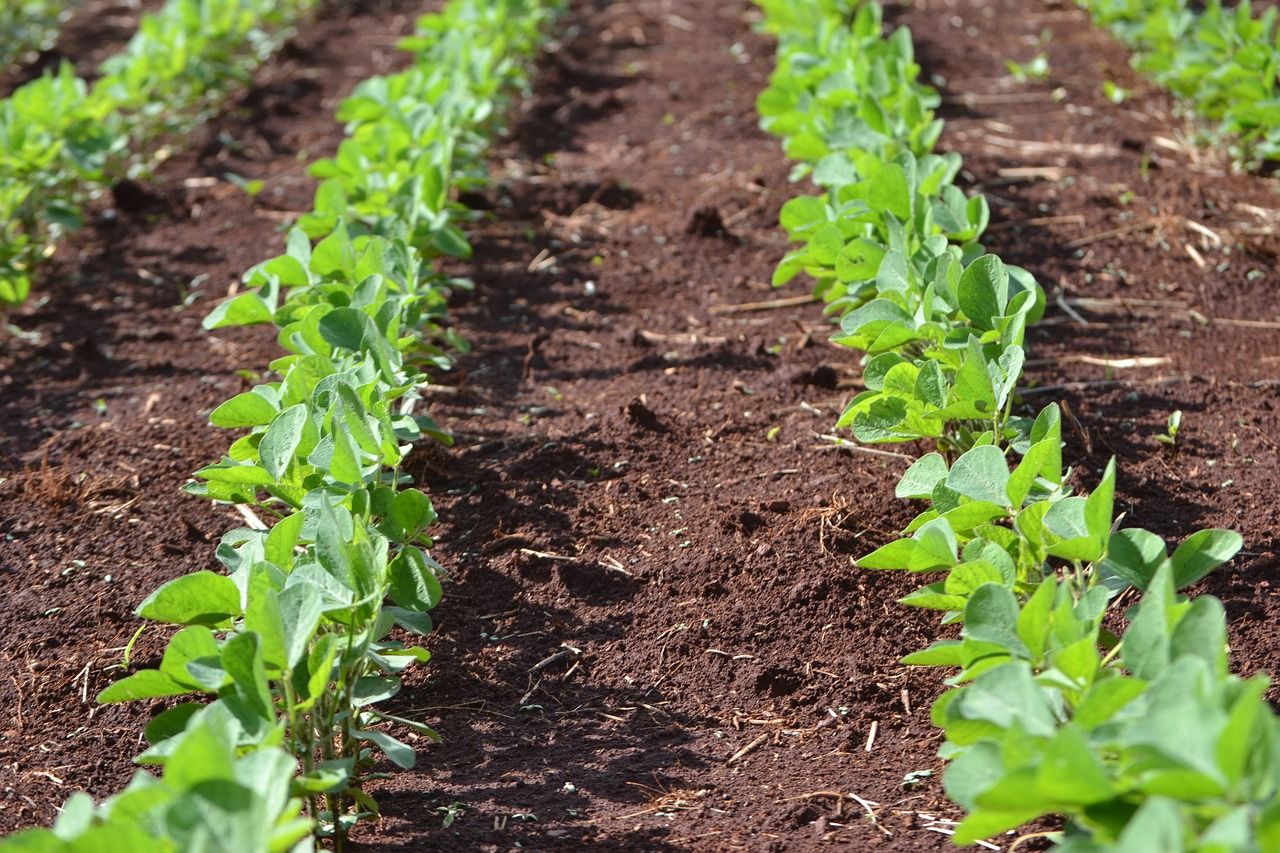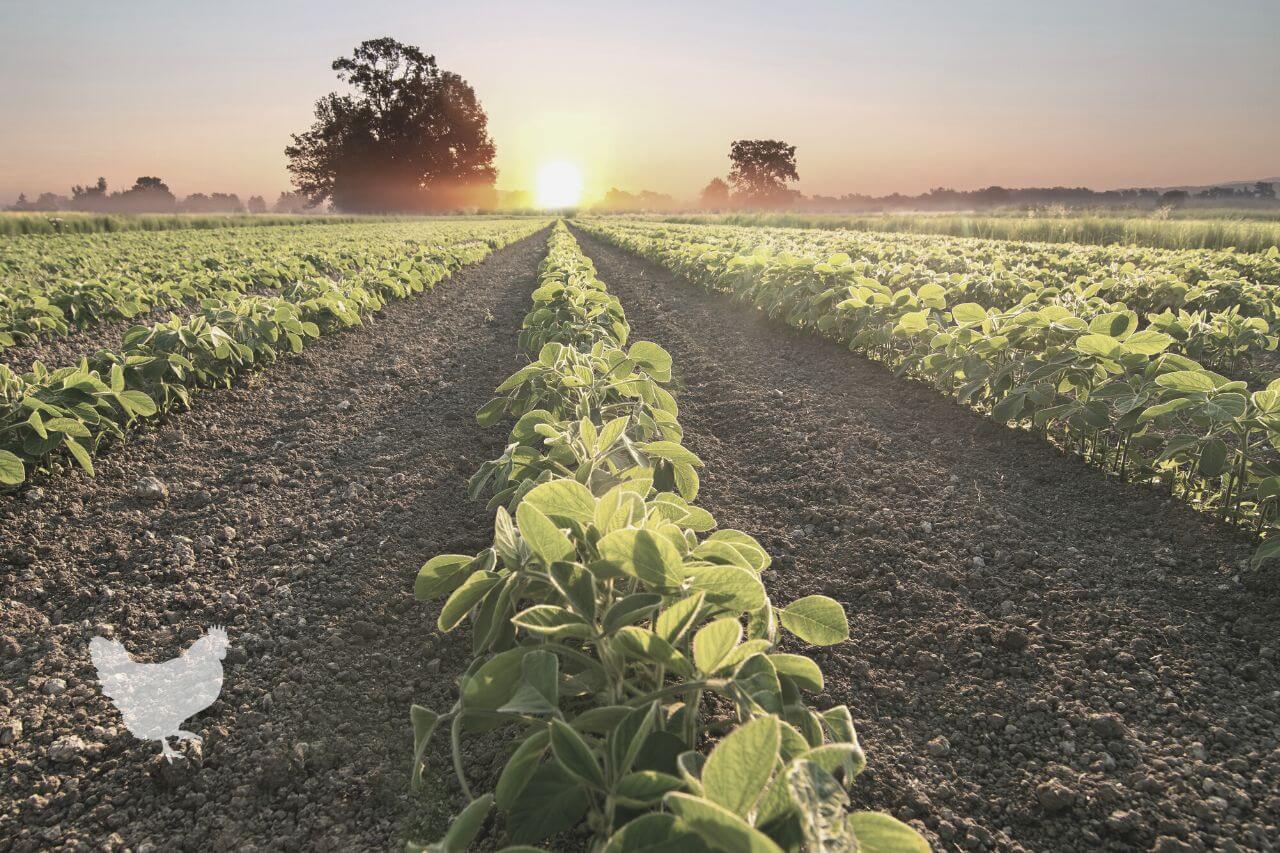It’s actually very easy to grow a small amount of soybeans on a food plot even if you don’t have much equipment to get your crop into the ground. In this article we cover the basics of planting a small crop of soybeans for personal use. Read on to learn more on how to plant soybeans without a planter.
What You'll Learn Today
Clear The Way For Soybeans

The first thing you need to do is kill off any existing vegetation a couple of weeks before you begin disking or tilling.
If this is the first time you’ve planted your field in soybeans, you might want to burn off any existing vegetation.
This is a good way to get rid of heavy weed growth or matted grasses and contribute nourishment to the soil. Just be careful to have a good source of water immediately available in case things get out of hand.
Your aim should be to till the ground as soon as it’s dry enough in the springtime. Late May to early June are good planting dates in the US.
If this is the first time that you’ve planted soybeans in this field, understand that you’ll need to inoculate the seeds so that they will be able to produce nitrogen.
Talk with your seed supplier about getting an inoculate, and follow packaging directions closely.
You don’t need to till exceptionally deep. Four inches is plenty. Once you’ve got the ground tilled, you’ll want to sow about 75 pounds of soybeans for each acre.
You should simultaneously broadcast a couple of hundred pounds of fertilizer with an NPK rating of 6 – 24 – 24. Note that the nitrogen rating on this fertilizer is quite low because soybeans produce nitrogen.
You can broadcast the seed and fertilizer using a hand seeder or simply toss it out by hand.
Broadcasting Soybeans By Hand
Once you got your seed and your fertilizer broadcast over the soil, disk or till the combination in to a depth of about a half an inch. You’ll want to make a couple of passes over the field using a cultipacker.
This is agricultural equipment used to crush dirt clods, remove air pockets and press down pebbles to form a firm, smooth seed bed.
When seed has already been broadcast, the machine’s roller presses the soil down to ensure good seed placement and good contact with the soil.
After you’re finished, you’ll still see some seed on the ground, but don’t worry about it. With the combination of seed on the surface and that which has been tilled under, you should have excellent germination rates.
Within a month to six weeks, you should have a pretty good stand of soybeans. You may also have some weed growth.
You’ll need to address this with either hand weeding or by using an herbicide recommended by your county extension agent.
If you use a chemical herbicide, be sure to handle it carefully and follow all packaging directions closely.
Be Ready For Challenges

A small plot of soybeans can be at risk for heavy predation by deer, rabbits and other critters, but if you put up a good electric fence you should be able to keep them out.
Additionally, improving habitat for wildlife outside of your food growing area can distract them away.
Drought conditions can also be quite challenging for a small plot of soybeans, so it’s a good idea to have an irrigation plan in place so that you don’t lose the food value you invested in.
If you do end up losing your soybeans, don’t despair. Remember that tilling them under in the fall is an excellent way to enrich your field and get ready for the coming growing season.
Frequently Asked Questions

Some safe herbicides commonly used in soybean fields include glyphosate, which is effective against a wide range of weeds, and products containing the active ingredient clethodim, which specifically target grassy weeds. Be sure to follow the instructions and safety precautions provided by the herbicide manufacturer . Remember that the label is the law. You may also wish to consult with local agricultural extension services for specific recommendations based on the weed species and regional conditions.
Establishing a deer food plot separately can help attract deer to a specific area and potentially divert their attention away from soybean fields. Even with this distraction, it may not guarantee that deer will stay away from the soybean fields entirely. You may also want to add fencing or scare devices to further deter deer from entering soybean fields.
Tilled under soybean plants contribute organic matter that decomposes and enriches the soil. This process adds essential nutrients like nitrogen, phosphorus, and potassium to the soil, improving its fertility. The exact nutrient content will depend on the specific soil conditions and the growth stage of the soybean plants at the time of tilling. Tilling your crop into the soil also improves soil conditions. The organic matter lightens the soil and improves drainage.
Ground level irrigation systems are generally preferred for soybeans. This includes methods like furrow irrigation or drip irrigation, where water is delivered directly to the soil near the plant roots. These systems are efficient in delivering water precisely where it is needed, reducing water waste and minimizing foliar diseases that can occur with overhead irrigation.
Organic mulching materials like straw or hay are commonly used in soybean fields to help prevent weed growth and retain moisture. These materials create a physical barrier that blocks sunlight from reaching weed seeds, inhibiting their germination and growth. Additionally, the mulch layer reduces evaporation, helping to conserve soil moisture. Your choice of mulching material may also depend on factors such as availability, cost, and the specific weed species prevalent in the area.
Will give it a try in my small garden in the backyard. Thanks for sharing.
My pleasure. I hope your small crop did well.
I want to grow one hectare of soya beans this coming season. What simple tools can you use in drilling holes and applying fertilizer if its to be planted by hand?
For planting and fertilizing a small family plot of soybeans, some hand tools that may be useful include a garden hoe or spade for soil preparation, a garden rake for leveling the soil, a planting dibber or small trowel for making planting holes, a hand seeder or seed dispenser for accurate seeding, and a hand sprayer or watering can for applying liquid fertilizers or foliar sprays. It is also important to have appropriate protective gear such as gloves and eyewear when handling fertilizers or chemicals.